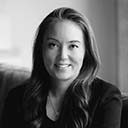Women in Technology: Celebrating Data Champions in Honor of International Women’s Day

Every day, I’m awed by the amazing strides women in technology have made. I’m aware there’s still much progress to be made, as noted in the TrustRadius 2021 Women in Tech report. While the rise in remote work due to the pandemic has led some women to be more productive, 22% of those surveyed say they’re now shouldering more of the household burden. And 72% report being outnumbered by men in business meetings by at least a 2:1 ratio.
Given these hurdles, at Informatica we take special pride in celebrating our women customers and colleagues who have made their mark in the field of data. In the advent of International Women’s Day on March 8, I’d like to take this opportunity to share the perspectives of some of these remarkable women. I hope their responses to our questions inspire you to help foster the next generation of women data leaders.
What are some of the benefits you've seen from having more diverse teams and organizations?
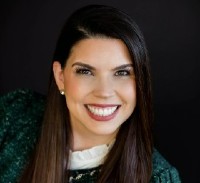
Wendy Batchelder, SVP of Global Data Governance and Chief Data Officer, Trust, Salesforce: Better, more creative ideas, faster innovation, higher impact to the top line, better cost savings, efficiency... I could go on. When you have more diverse backgrounds, experiences, locations, you name it, tackling the problem, with psychological safety, then the results are incredible. When a diverse team gets together, feels safe, and can attack a problem, the sky's the limit.
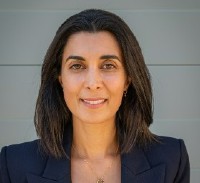
Sonia Boije, Data Enablement Officer, Ericsson: I lead a diverse, global team, not only in terms of gender, but also in terms of age, experience, culture, and ethnicity. I believe that diversity produces better results by bringing together such a varied range of perspectives, experiences and thinking. However, to realize the full benefits from diversity, you need to have a culture of inclusion, where people feel safe in bringing different ideas to the table, and to challenge. I see this happening regularly in my team and it leads to more creative and effective solutions.

Kjersten Moody, Chief Data Officer, Prudential Financial: I’ve had the opportunity to work on diverse teams throughout my career, and I have found that it accelerated my growth as a leader and led to better business outcomes. When you have diverse teams, you see increased innovation and better solutions. There is also an opportunity for a boost in team culture and enhanced learning and development. In my experience, diversity has inspired curiosity and professional growth for all team members.
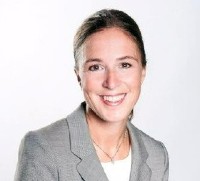
Lisa Oreland Murby, Senior Director, Field Sales, Informatica: It provides diverse perspectives and ways of thinking, which makes discussions less one-sided and should result in smarter decisions. It’s also more fun with diverse teams and organizations — it creates better teams and a stronger culture.
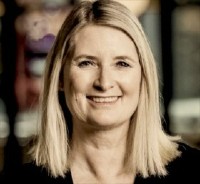
Sonya Crosby, Chief Data Officer, Westpac: Diversity brings different perspectives into the room, and we get the benefit of different experiences, culture and thought patterns. It also balances the dynamic in the room — if we’re all alike, then you get “the same,” which can stagnate growth and opportunity. The more diverse we are, the more likely we’ll be more representative of our actual customers too.
What are some ways to counter potential biases against women in the workplace?
Wendy: I think the most important place to start is to acknowledge and accept that they very much still exist. Ask a female-identifying person about her experiences. Undoubtedly, she will have many to share. Think about your own experiences and reflect on how that could have been handled better. Speak up and out about that. What do you need? What kinds of support? Ask for it.
One simple example: If you often feel spoken over or unheard in a meeting, ask someone to watch for it, and when (not if!) it occurs, ask them to verbally support you. It may look like, "Hey Wendy, I heard you say that we could approach this differently — sounds like you may have an idea. Could you say more about that?" It creates space for the person to be heard by everyone and you are supporting her in the process, which is powerful.
Sonia: Biases of many kinds can exist – both conscious and unconscious – in a workplace, and of course there are usually programs in place to address them. I believe in encouraging a “speak up” environment, empowering people to challenge biases as they encounter them. This isn’t easy, however, and requires managers to be effective role models; for example, calling out when someone has been interrupted during a team meeting, or if people make stereotypical references.
Personally, I acknowledge that we are not responsible for the thoughts of others. What we can control is how we behave and perform, so it is better to pursue excellence, filter out the noise, and let your results speak for themselves. It can also help to find mentors and sponsors in your organization who can ensure your work is getting the recognition it deserves. It’s always helpful to have support on your journey.
Kjersten: I’ve been very fortunate in my career that I had supportive male and female mentors. I also recognize that my generation benefits from the trailblazing women who came before us. Our generation of leadership has an accountability to continue the push towards equality for all in the workplace. There is no single answer, unfortunately. Examples of leadership actions include how we lead and model a culture for an inclusive workplace; diverse interview panels; ensuring fair and equitable compensation; making yourself available for mentoring; flexibility within the workday to accommodate diverse needs for work/life balance; unconscious bias training; ensuring all voices are heard in meetings; and listening and learning from our teams and colleagues.
These are examples. The key point is that diversity, equity, and inclusion are built into processes and culture rather than being separate or an afterthought.
Lisa: Pay extra attention to whether women are invited to formal and informal groups at all levels.
Sonya: It’s important that we actively address bias; e.g., “man-say” — when a women suggests an idea and is ignored, but a man in the room picks up and says the idea and is applauded. Where we see this, we (and particularly other men in the room) should stop and acknowledge the woman that actually brought the idea to the table. And help people see their hidden bias — sometimes it’s as easy as taking them aside and making them aware of a comment or action that showed bias. It takes courage, but you’ll be changing lives by doing so.
Also, make sure that you put your teams on anti-bias training — we all have biases that we acquire in our early years, so we need to understand what our own biases are and use that self-awareness to create our own checks on behavior.
What key piece of advice would you offer those following in your footsteps?
Wendy: A couple things stand out to me. First, build competency in your craft, know it deeply, and always continue to challenge your knowledge and thinking. Keep a focus on lifelong learning (both technically and core skills like communication and leadership). Most importantly: bring someone with you. We need more talent, especially from underrepresented groups like women and black, Indigenous and people of color (BIPOC).
Sonia: Know who you are, what your capabilities are, and be proud and confident in both those things. Finding your passion is important, but it takes more than that to succeed. You need to couple it with energy, resilience, and determination to make it work. I think with that mindset, you’ll have every chance of achieving your goals!
Kjersten: Be brave, never stop learning, and work in an environment where you grow and thrive.
Lisa: Doing a career in a male world might tempt you to try to be and act “like a man.” You are much more successful if you always stay true to yourself — be yourself — and leverage your own personality and strengths. Trust yourself, because you are good!
Sonya: Back yourself and be yourself. Borrowing from Michelle Obama and her book, Becoming — on being enough — “Am I good enough? Yes I am.” Stay open to new ideas and thinking and encourage others to do the same. Paying it forward is how we create a movement.
Next Steps
For more insights on how we’re advancing diversity together with our partners and customers, check out our interactive Women in Data hub.
1https://www.trustradius.com/buyer-blog/women-in-tech-report#
2https://www.internationalwomensday.com/
